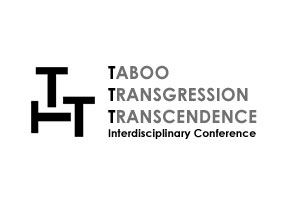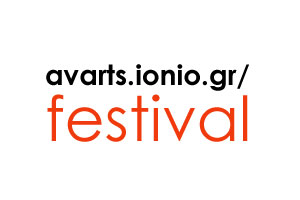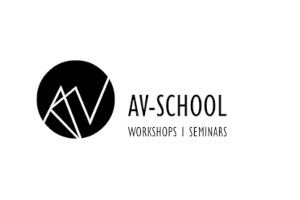The diversity of approaches to art and science collaborations appears to expand in concert with developing interests that intersect across both disciplines. Individual practitioners (often the artist as ‘resident’) have much to share with and gain from institutional openness (often a scientific lab or research centre and occasionally a museum). When working with an artist, the scientist may (re)consider their questions through a different lens. Such a continuously expanding and experimental field opens up possible ways to navigate collaborative experiences that are worthy of closer discussion.
The research aims to draw out several facets of ‘how’ institutional collaborative spaces can realise genuine artistic and scientific results. This is one of the questions the Australia Research Council funded project “The Collaborative Museum. Embedding Cultural Infrastructure in the City” investigates. The project is a partnership between Western Sydney University and the Powerhouse (previously the Museum of Applied Arts and Sciences). The Powerhouse Ultimo is an example of a classical 19th-century industrial technology and science museum, based in Sydney CBD, with a history of revered collections and a strong research culture with curatorial and exhibition skills. Our research investigates how the new Powerhouse Parramatta due to open in 2026 will develop, a new museum in a rapidly changing part of the city, which is still considered by many as an ‘outskirts’ location even though it is the demographic centre of metropolitan Sydney.
The use of interdisciplinary dialogue in art-science collaborations frames the research question.
The role of the artist is multifaceted and often debated, but one of the roles is to shine the light in places little known, open up discussions that somehow don't get to happen in a community otherwise. Their role is not to necessarily solve the problem but lead to greater curiosity and awareness in society that, in turn, generates greater confidence to enable more active engagement (Cmielewski 2012:2).
Potts and Helyer suggest that the “artist’s project is informed – and inspired – by scientific research questions” (2022: 23). Yet there is a tension that frequently polarises the arts and sciences. Artist Nigel Helyer also points out that neither disciplines have a monopoly on inspiration, imagination and creativity. Using the metaphor of ‘walking a tightrope’, he observes that “order and chaos is one of the central techniques of art. By contrast the task of science is to distil clarity from chaos, to disambiguate the signal from the noise” (2023:14).
In a successful art-science collaboration, the result is a co-creative process between the artist and the scientist, where each discipline contributes and benefits from the process. This is in contrast to a more traditional relationship where the artist is often seen as a ‘servant’ to science. The co-creative approach provides a way to remedy the often-skewed relationship between artist and scientist whereby the artist “explains” the science and the scientist “assists” the artist.
This project aims to work through some of the key elements that go towards making an effective collaboration by examining different models, including access to a lab, summer schools, S+T+ARTS, brokering and networking. The research will also query the contemporary use of the ‘summer school’ and dedicated laboratory spaces. Various types and intentions of the organisations and individuals will be looked at in Australian and international examples.
Interviews with international artists and scientists dive deeply into this creative and collaborative relationship focusing on both the individual’s experience and that of the institution. The research is based on semi-structured questions concerning ideas, benefits, and challenges of art-science collaborations. The prime questions of interest include the characteristics of genuine art-science exchanges and how transdisciplinary aspects are developed. Case study examples drawn from interviews will illustrate individual artists’ approaches to their practice. The individual practitioner interviewees include Jill Scott (Switzerland), Marta de Meneses (Portugal), and Nigel Helyer (Australia). The case studies will also describe challenges faced in forging institutional capacity to host art and science collaborations and how institutional leaders enhance the capacities of their institutions to do so. Wearing their institutional leadership roles, the interviews with Jill Scott and Marta de Menezes will demonstrate how they have also built and expanded the expertise of universities (artists-in-labs program, the Department of Cultural Analysis (DKV), Zurich University of the Arts (ZHdK)), Mary- Anne Lea (Institute for Marine and Antarctic Studies, University of Tasmania and the independent research centre, Cultivamos Cultura.
“Collaboration. Creativity. Art and Science - How hard can it be? Institutional collaboration spaces for art and science” delves into how the vital relationship between artists and scientists can be more easily enabled for individuals and institutions to better understand the myriad global questions that we face.
Cmielewski, C. 2012. “Adaptation” in ADAPTATION. Perth. University of Western Australia.
Cultivamos Cultura, n.d. https://cultivamoscultura.com/, accessed 2 April 2025.
Helyer, N. 2023. “Sonus Maris; The Strange Attractor” in Sonus Maris. Sydney. University of New South Wales. ISBN: 978-0-7334-4115-8.
Potts, J. & Helyer, N. 2022. Science Meets Art. Singapore. Jenny Stanford Publishing Pte. Ltd.
University of Tasmania, 2024. Institute for Marine Antarctic Studies,
Zurich University of the Arts, n.d. artists-in-labs, <https://artistsinlabs.ch/en/> accessed 2 April 2025.
Cecelia Cmielewski is an arts industry leader with over thirty years’ experience in the cultural sector. She is a Research Fellow at the Institute for Culture and Society at Western Sydney University (WSU) on Australia Research Council (ARC)-funded international and WSU-funded local projects. She is currently the WSU Research Fellow on ARC-funded The Collaborative Museum: Embedding Cultural Infrastructure in the City in partnership with the Powerhouse Museum. Cecelia was previously the research manager for the ARC-funded project UNESCO and the Making of Global Cultural Policy and a Chief Investigator on the ARC-funded Large Urban Screens and the Transnational Sphere with the University of Melbourne, Federation Square and Nabi Art Centre, Seoul. Whilst at the Australia Council for the Arts, she managed two full policy cycles of the Arts in a Multicultural Australia policy (2000-2006 and 2006-2011).
Cecelia produces artworks where social, technological and cultural engagements intersect to encourage new understanding across knowledge systems and realises these projects as an academic researcher, manager and arts curator. She holds a PhD (Western Sydney University), an MBA (University of Adelaide), a Bachelor of Design (University of South Australia), and a B.A. (Flinders University). She lives in regional Australia on unceded Dharawal lands.
Back





